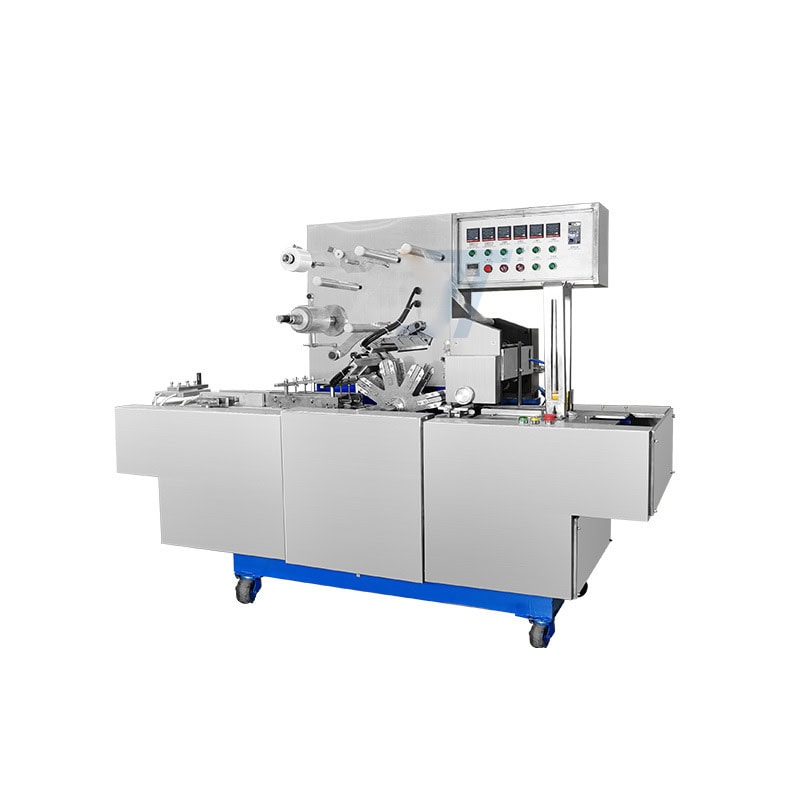Many manufacturers have problems with inefficient tobacco packaging that leads to product waste and slower production. Tobacco packing machines solve this problem by giving you a way to pack your product accurately, efficiently, and automatically.
A tobacco packing machine is a machine that automatically packages tobacco into different formats, such as pouches or containers. It makes sure your product is packed to the right level. It can help you reduce the amount of manual labor you have and make your process more efficient.
Understanding how these machines work will help you understand whether they are efficient and reliable.

What is a Tobacco Packing Machine?
Tobacco packing machines are designed to automate the process of filling and sealing tobacco products, whether it be loose-leaf tobacco, snus, or shisha. They come in various models, from semi-automatic to fully automated machines, capable of handling different packaging types such as pouches, containers, or cartons.
These machines streamline the production process by precisely measuring tobacco, ensuring that each package meets specified weight or volume requirements, minimizing waste, and improving consistency. Machines like a Bottle Labeling Machine often complement packaging solutions, adding labels to final products seamlessly.
The Basic Working Principle of a Tobacco Packing Machine
The core principle behind a tobacco packing machine involves several key stages: feeding, weighing, filling, sealing, and often labeling or coding. Tobacco is fed into the machine through a hopper or conveyor. Automated weighing systems measure precise amounts of tobacco, which is then transferred into pre-made pouches or containers.
After filling, the machine seals the package, ensuring an airtight closure to maintain product freshness. Advanced machines may also incorporate nitrogen flushing to preserve the quality of the tobacco further. This technology is similar to the precision and functionality seen in Labeling Machines, which are also designed for high accuracy.
Types of Tobacco Packing Machines
Tobacco packing machines are available in various types, each catering to specific packaging needs:
- Vertical Form Fill Seal Machines (VFFS): These machines create pouches from a flat roll of film and then fill them with tobacco before sealing.
- Horizontal Form Fill Seal Machines (HFFS): These are used for larger packaging formats, such as cartons or bulk containers.
- Snus Packing Machines: Specifically designed to pack snus into small, portioned pouches.
- Shisha Tobacco Packing Machines: Custom-built to handle the unique consistency and moisture content of shisha tobacco.
Each type has specialized components tailored to handle different types of tobacco products and packaging formats.

Key Components of a Tobacco Packing Machine
The essential components of a tobacco packing machine include:
- Hopper/Feeder: Where raw tobacco is loaded before the packaging process begins.
- Weighing System: Ensures the correct amount of tobacco is dispensed for each pack.
- Filling Mechanism: Transfers measured tobacco into the packaging material.
- Sealing Unit: Seals the package to ensure freshness.
- Labeling or Coding Unit: Adds necessary information, such as batch numbers or expiry dates.
These components work in unison to deliver efficient, high-quality results.
Benefits of Using a Tobacco Packing Machine
Tobacco packing machines offer several advantages:
- Increased Efficiency: Automates manual tasks, speeding up production lines.
- Improved Accuracy: Reduces human error by using precise weighing and filling mechanisms.
- Cost Savings: Minimizes labor costs and reduces material waste.
- Enhanced Product Consistency: Ensures uniform packaging, improving product presentation.
- Better Preservation: Sealing and nitrogen flushing enhance the shelf life of tobacco products.
These machines operate with the same level of precision seen in other industrial equipment like the Powder Filling Machine, ensuring minimal waste and maximized output.
Automation and Technology in Modern Tobacco Packing Machines
Modern tobacco packing machines incorporate advanced technologies like PLC control systems, which allow for easy customization and adjustments. Features such as touch-screen interfaces, sensors for detecting fill levels, and real-time monitoring ensure that the machines operate with minimal downtime and maximum precision.
Many machines also include integration options for data collection and quality control, ensuring manufacturers can track production performance and maintain high standards. The inclusion of barcode printers or Industrial Label Printers enhances the automation process by labeling the packaged products accurately.
Challenges and Maintenance of Tobacco Packing Machines
Despite their efficiency, tobacco packing machines require regular maintenance to operate at optimal levels. Common challenges include wear and tear on moving parts, such as sealing jaws or conveyors, and calibration issues that may arise due to product variations. Routine maintenance schedules, coupled with proper training for machine operators, are essential for long-term reliability.
Some machines are equipped with self-diagnostic tools to detect issues before they cause significant downtime, further ensuring smooth operation.
Customization Options for Different Tobacco Products
Tobacco packing machines are highly customizable to suit various products, including loose tobacco, snus, or shisha. Adjustable settings allow manufacturers to change fill levels, packaging sizes, and even sealing techniques to meet different product specifications.
Customizations may also include options for integrating additional packaging layers, such as foil wrapping for freshness or incorporating tamper-evident seals for added security.
Conclusion
Tobacco packing machines revolutionize the tobacco industry by providing faster, more accurate, and efficient packaging solutions, leading to improved product quality and consistency.
You may be interested in:









